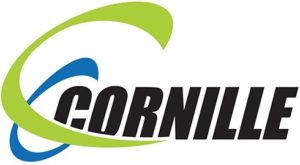
Traceability
Traceability is the ability to trace the history, the application or the location of an item or an activity, by means of recorded identification (according to the EN ISO 8402 standard).
The traceability of food products, of animal feed and of any other product intended for use in food products must be established at every step of the supply chain (production, processing and distribution). Although initially designed for products intended for human consumption, the traceability principle was also adopted for the categories of animal by-products which are excluded from human and animal consumption (categories 1 and 2) in order to improve overall health safety.
TRACEABILITY IN THE ANIMAL BY-PRODUCT PROCESSING INDUSTRY
Animal are identified on the farm. This identification follows the animal until it is slaughtered. The companies which remove fallen stock obtain the animals’ identification data (cattle identification is at a very advanced stage and identification will soon be implemented for all other livestock thanks to a European development programme). Regarding the collection of by-products in abattoirs or at later stages of the process, the data given to the operators can be linked with the identification of the meat and can also be traced back to the animals from which these by-products come from.
SUPPLIERS (ABATTOIRS, FARMERS ETC.)
When animal by-products are supplied to a processor, a document is handed over to the driver who collects them. This document contains the information thanks to which the origin of the by-products can be identified within the supply chain and the animals concerned can be traced back.
Animal by-products collected in abattoirs and boning rooms with accompanying commercial documents.
PROCESSORS
This information is entered into a computer as soon as the by-products arrive at the processor’s premises.
Incoming batches are then created which can be tracked as far as the finished products.
During processing, significant data regarding the process such as the recording of various measurements (temperature, time, pressure) and any other parameters deemed relevant by the processor are recorded so that they are stored and in order to safeguard the quality of the finished products. Processing batches are listed and recorded.
DISPATCH
The batches that are dispatched (single or mixed products) are recorded.
They are listed on the delivery note or on the accompanying commercial document, a copy of which is handed to the driver to be given to the customer. In the case of exports to third countries, shipments are accompanied by a health certificate, supplied by the Department Directorate of Veterinary Services, and a CMR (an international consignment note).
Before and after processing, the commercial documents used during transportation must specify :
- The date on which the material was taken from the premises ;
- The description of the material ;
- The quantity of material ;
- The place of origin of the material ;
- The name and the address of the carrier ;
- The name and address of the recipient, and if applicable, its approval number ;
- If appropriate, the approval number of the plant of origin, as well as the nature and the methods of treatment.
These documents must be produced at least in triplicate, and the original document must accompany the consignment to its final destination. The recipient must retain it. The producer must retain one of the copies and the carrier the other.
These documents must be kept for at least two years.
